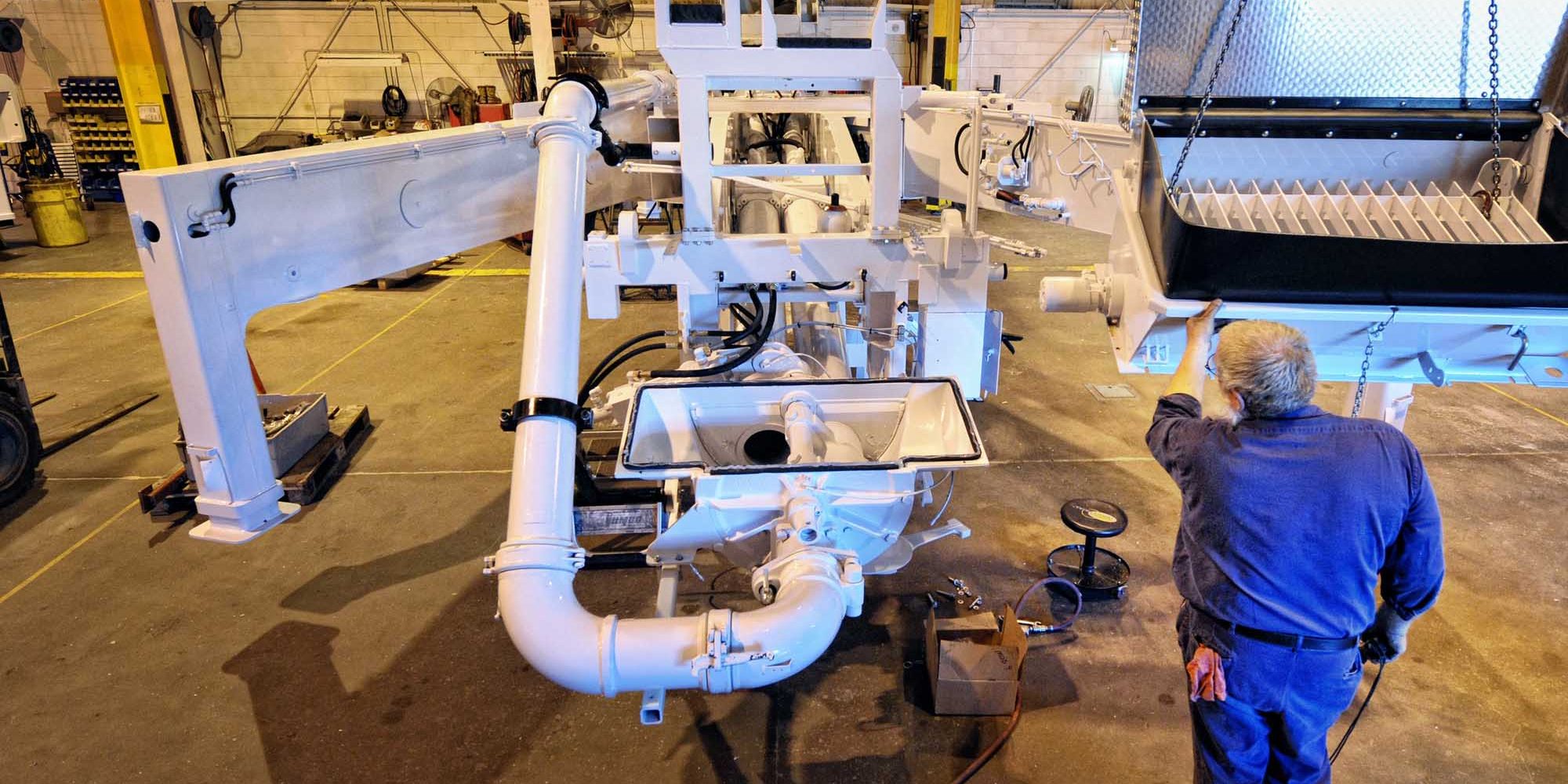Organization is the key to reducing safety issues at the concrete pumping worksite. Consequently, the contractor in charge should be responsible for seeing that the proper equipment is ordered for the needs of the job. He or she is also responsible for identifying potential hazards and remedying dangerous situations to prevent accidents.
The American Concrete Pumping Association (ACPA) recommends that all concrete pumping operators receive safety certification to prevent accidents and learn how to operate the equipment safely, so it is your duty to make sure that all your personnel is up to date on the latest training courses and certifications in order to prevent accidents from occurring.
Preparing the Site
Site preparation begins well before the pumping process. Be sure to remove all clutter and clear out some space for the pumping truck. Ideally, the space has already been leveled and is large enough to handle a pump using extended outriggers. Additionally, there should be enough space to handle a couple of mix trucks.
- Powerlines
Power lines cause the most fatal accidents while pumping concrete. To prevent or reduce these types of accidents all personnel should receive electricity and power line safety training.
When a power line exists near the job site, a danger zone should be established and marked with cones. In addition, a spotter should be on hand at all times to warn an operator when the boom comes dangerously close to the designated danger zone.
It is also recommended that a meeting is conducted to discuss how the pouring operation will be handled and safety methods for avoiding nearby power lines. According to ACPA, booms should never be used within 20 feet of power lines.
- Cribbing
Adequate cribbing is essential to distribute the weight or balance of the cement load. Typically, pump manufacturers do supply some outrigger pads with their pumping equipment. Contractors may also have an extra supply of steel plates or wood dunnage that can be used for additional cribbing when needed.
- Outriggers
In addition to power line accidents, poor outrigging procedures can cause numerous accidents on construction work sites when pouring concrete.
Tip overs are predominately caused by using outriggers without sufficient cribbing, or the site surface has not been properly prepared to support the weight of an outrigger. Occasionally, an unknown underground void could be the cause of tip overs.
The soil type can be a critical factor when it comes to keeping outriggers safe and steady. Each soil type can have a different load-bearing capacity. For example, replacing virgin ground with compacted gravel more than doubles the support capabilities. In some situations, tip overs occur when outriggers have not been fully extended.
Do’s of Concrete Pumping
- Use trained and certified operators.
- Safety straps should be checked for wear and used on the tip hose and hanging attachments.
- Prepare the ground properly using outrigger pads.
- Operators should always wear the appropriate protective gear.
- Only use boom equipment that is working correctly and has had updated inspections.
- Remove all personnel from the area when air is entering the placement system.
Don’ts of Concrete Pumping
- Never use a boom to replace the job of a crane.
- Don’t open a coupling when it is pressurized.
- Never climb on hydraulic systems for the purpose of cleaning clogged lines.
- Don’t stand in front of the discharge end of cement pipeline.
- Never handle clogged hoses that are under pressure.
- Don’t operate or set up a concrete pump when it is dark.
- Make sure there are no workers near a discharge hose while it’s being primed.
Concrete Pumping Insurance
Regardless of how carefully a concrete pumping job is planned, accidents can still happen. Before accepting any concrete pumping job, you should make sure you have concrete pump insurance in place to protect your company and employees.
- General Liability Coverage: Protects businesses against a variety of liability claims for property damage, bodily injury and personal injury.
- Concrete Pumping Insurance: Offers coverage for concrete pumpers rented including over-the-road liability, loss of income and extra expense, loss of rents, equipment in your care and more.
- Physical Damage & Auto Liability: Covers personal effects, towing and the physical damage of any rentals.
- Workers Compensation: Coverage to protect workers that may be injured on the job while pumping.
Concrete pumping can be a dangerous job. It is up to contractors to take safety precautions whenever possible. Jobs should always be carefully planned, and sites should be prepared properly before beginning work. Using the proper safety equipment and resolving safety issues reduces the chances of concrete pumping accidents.







